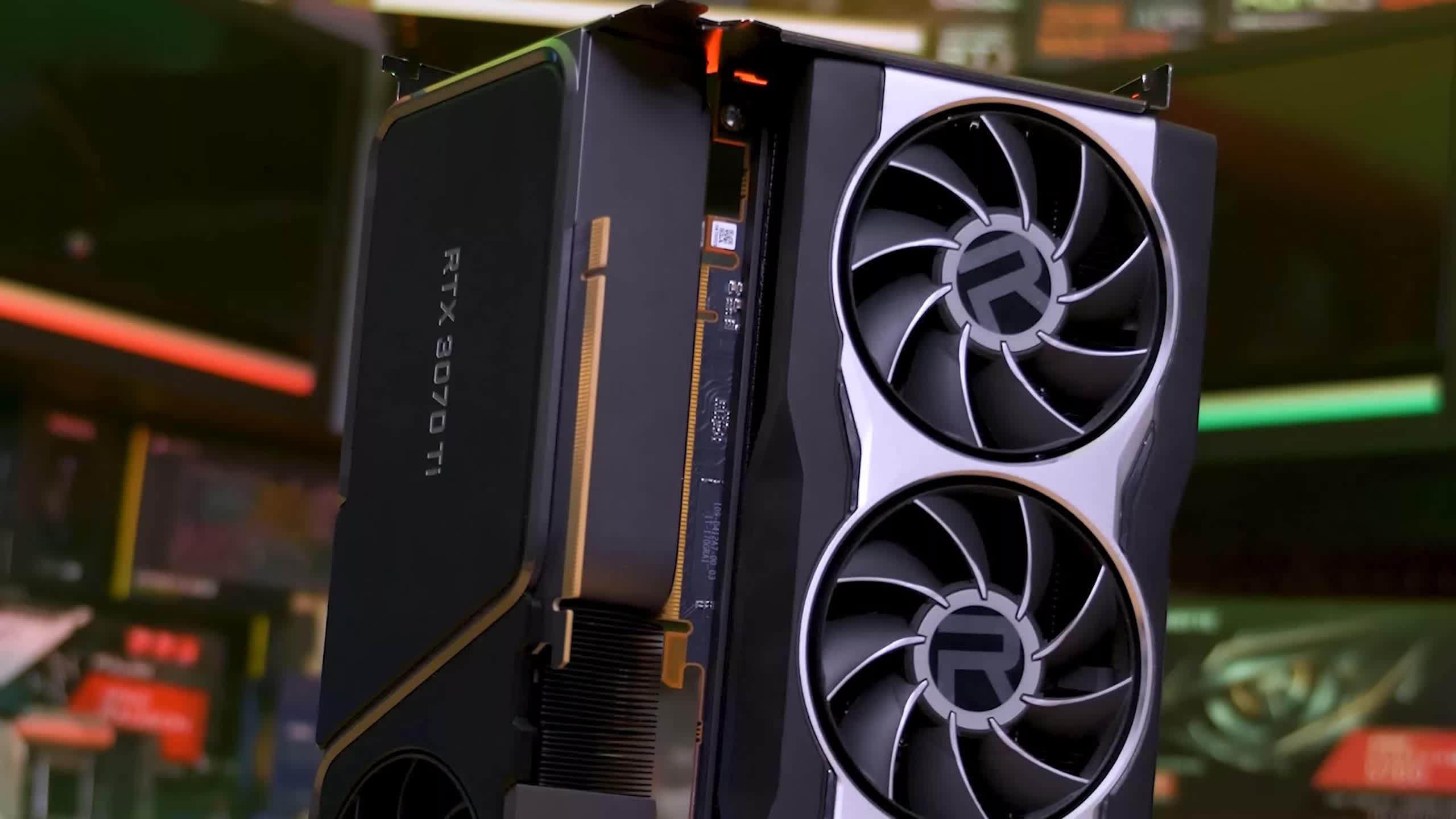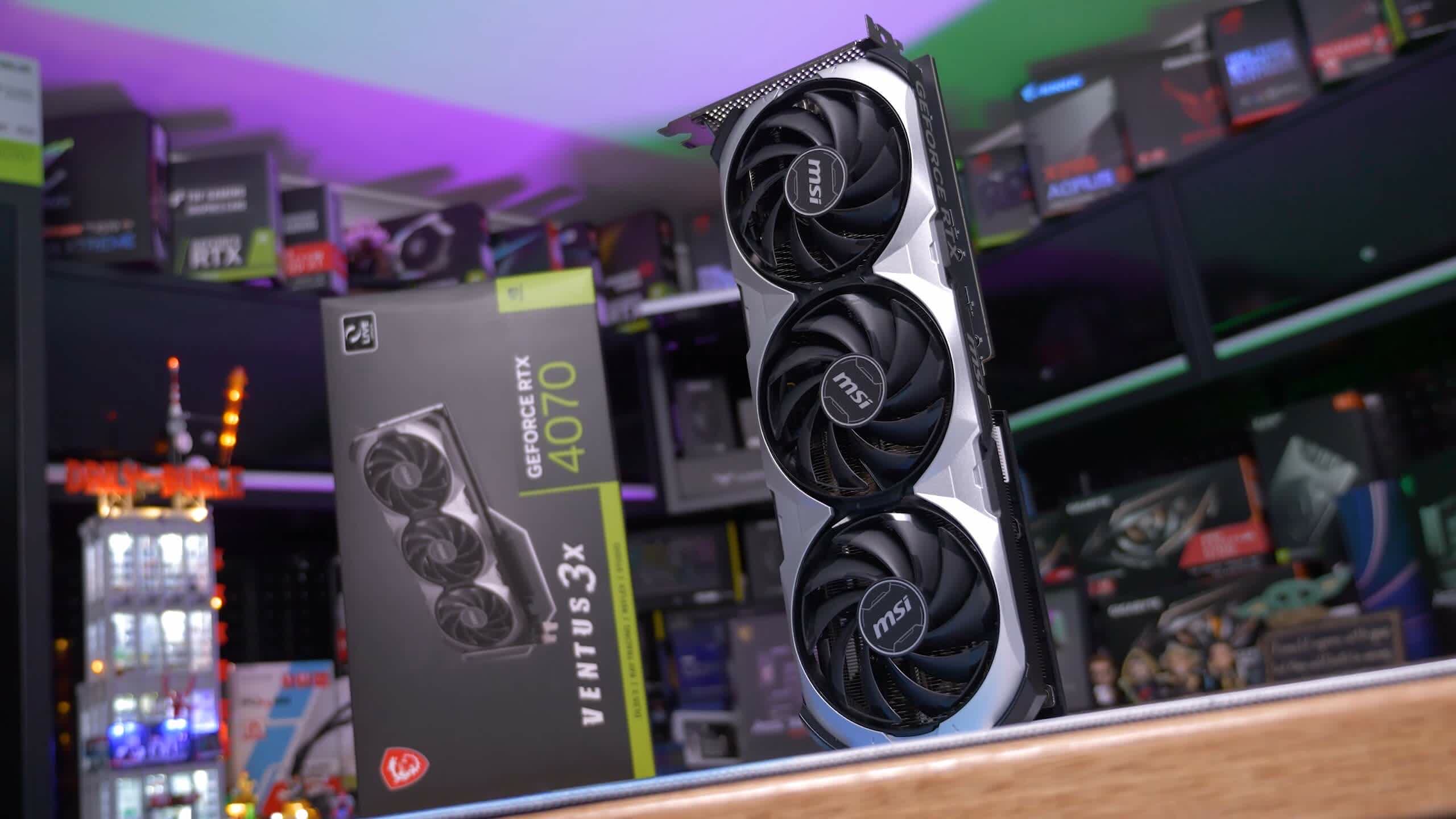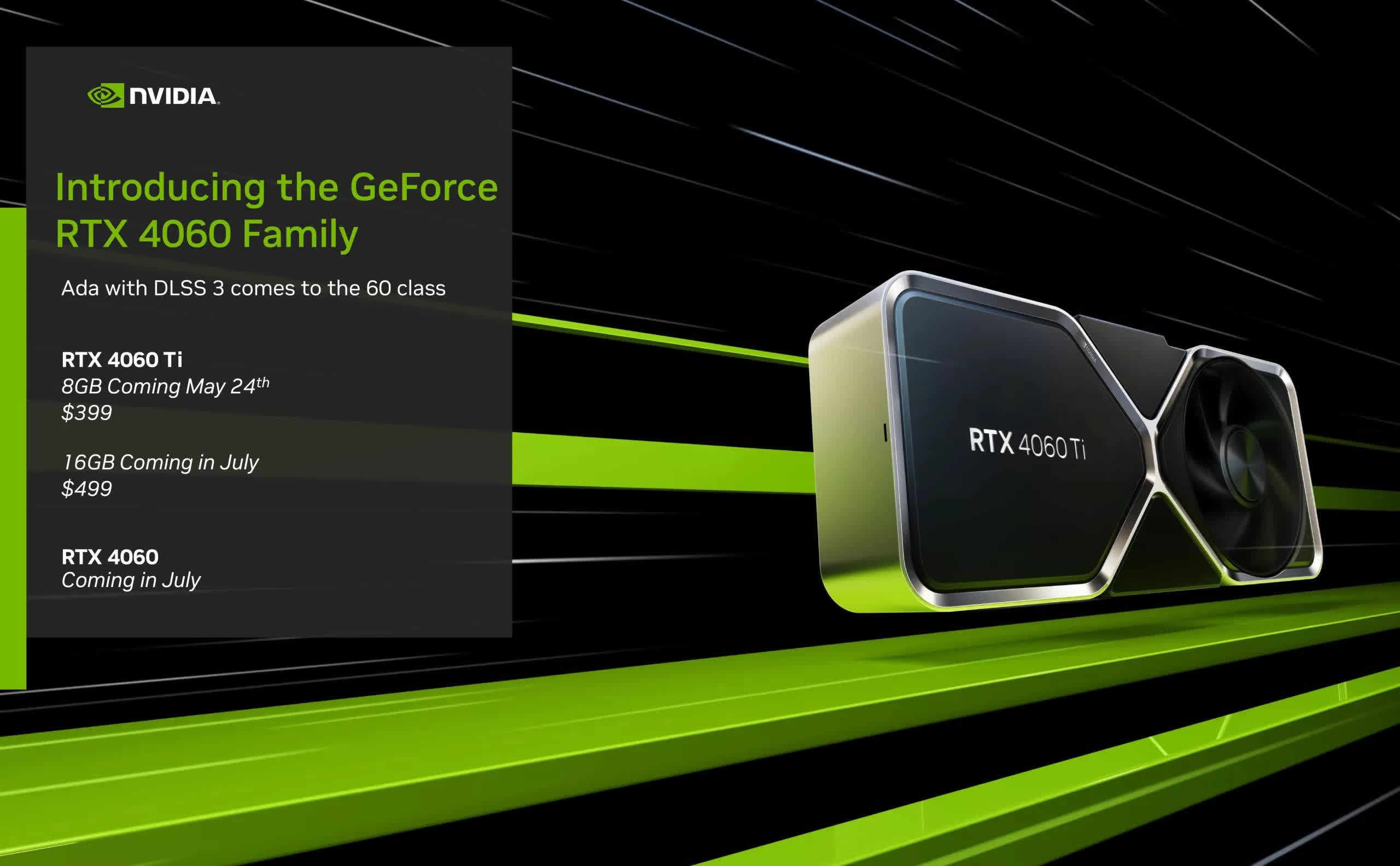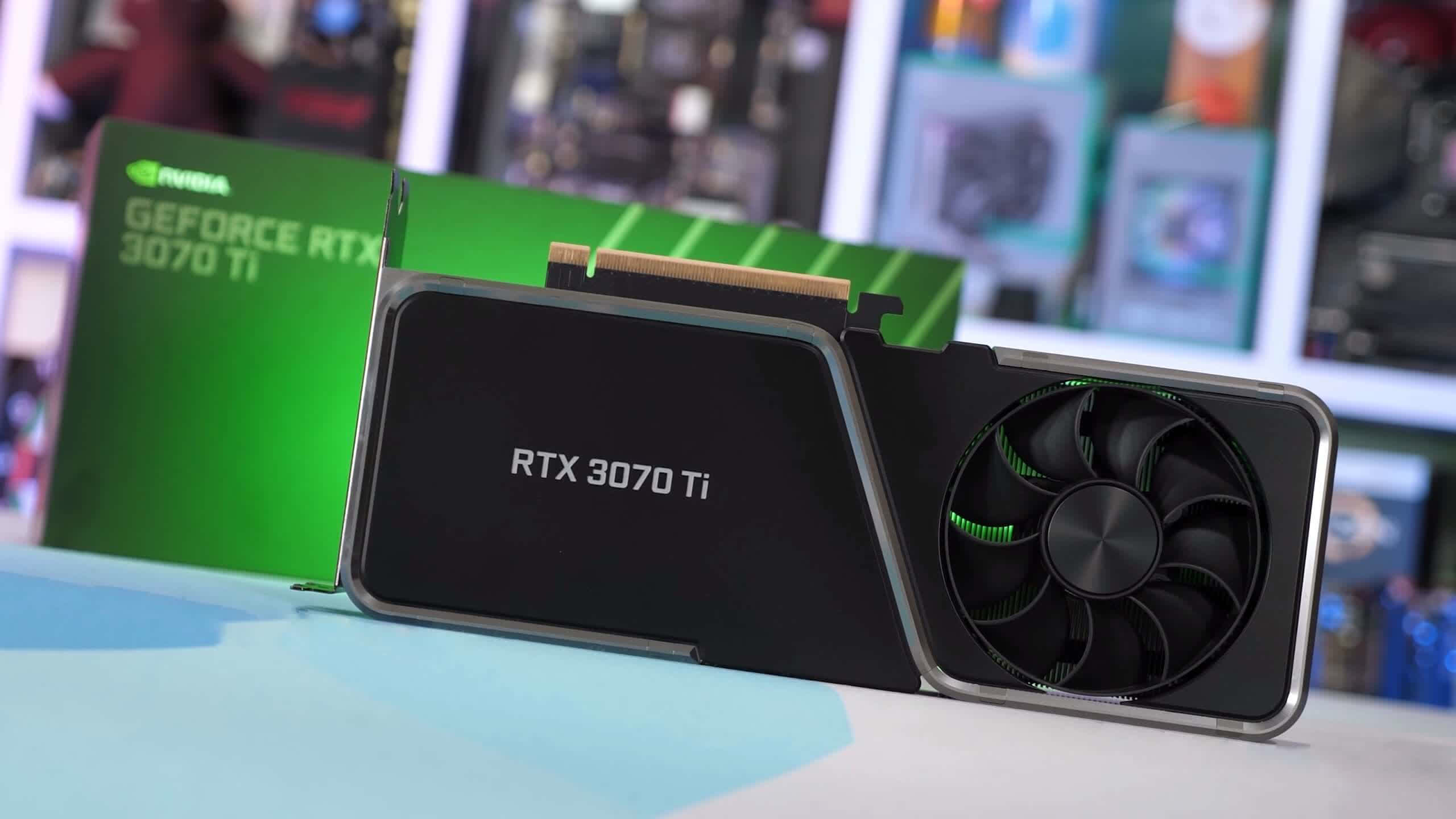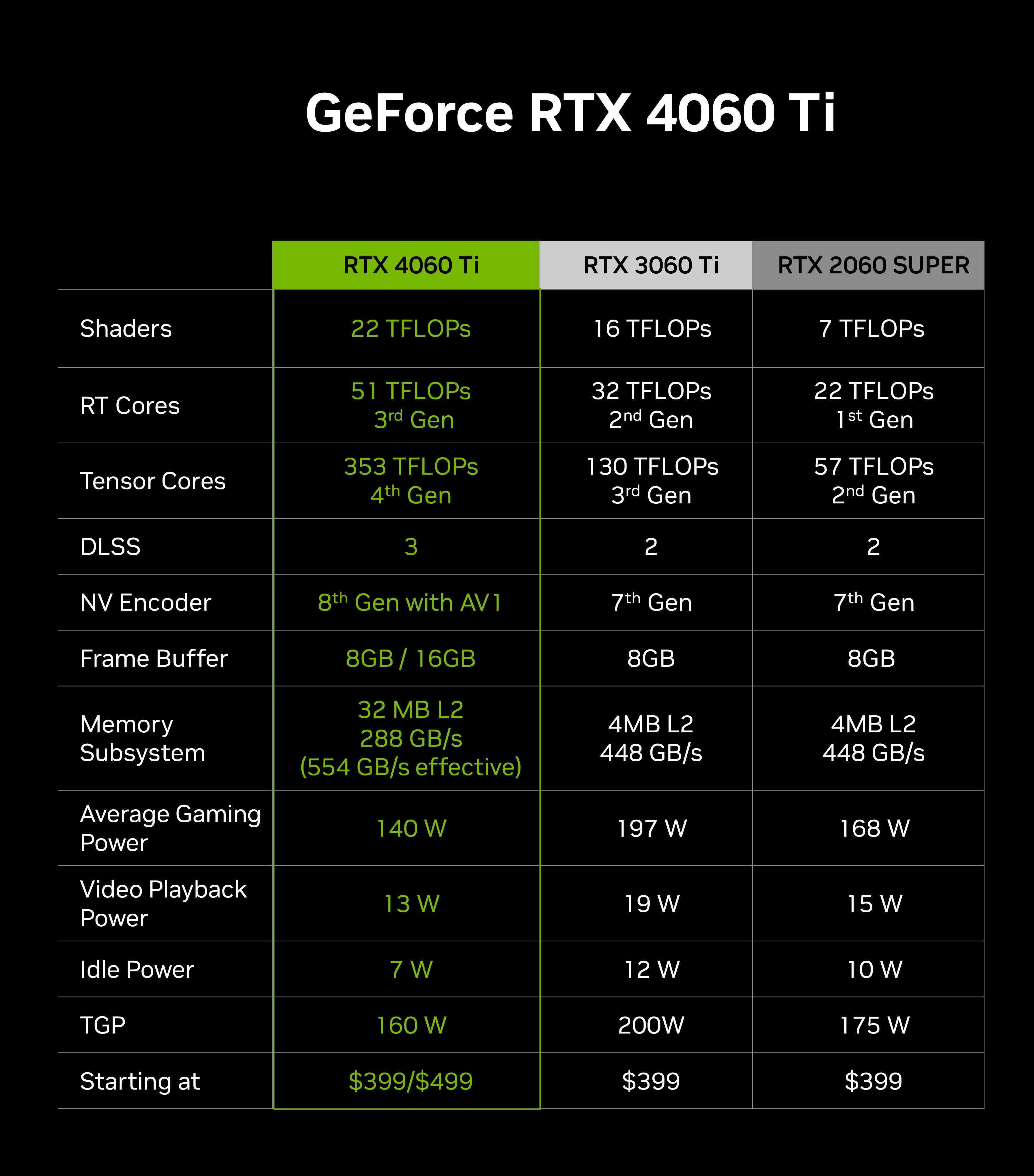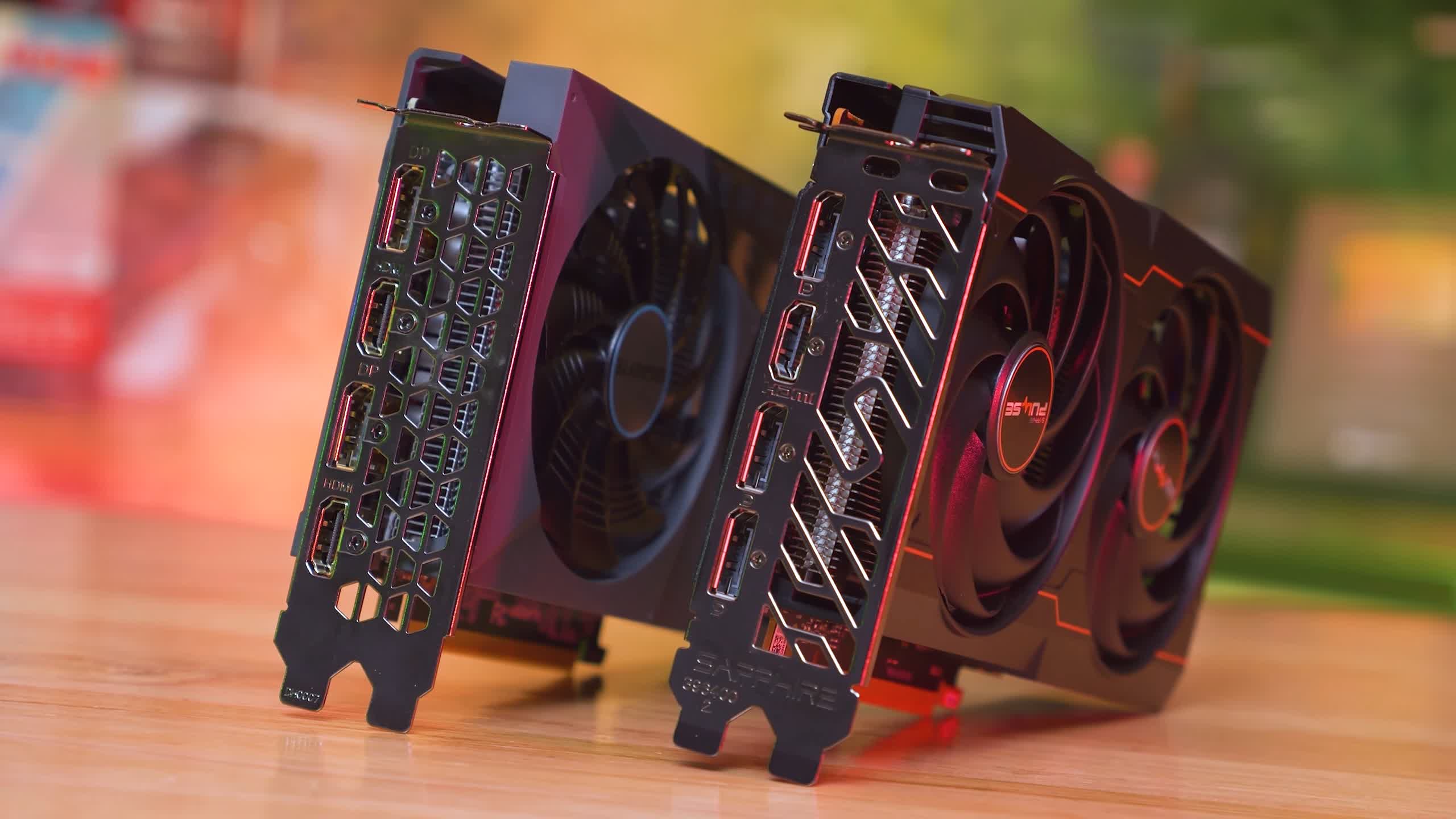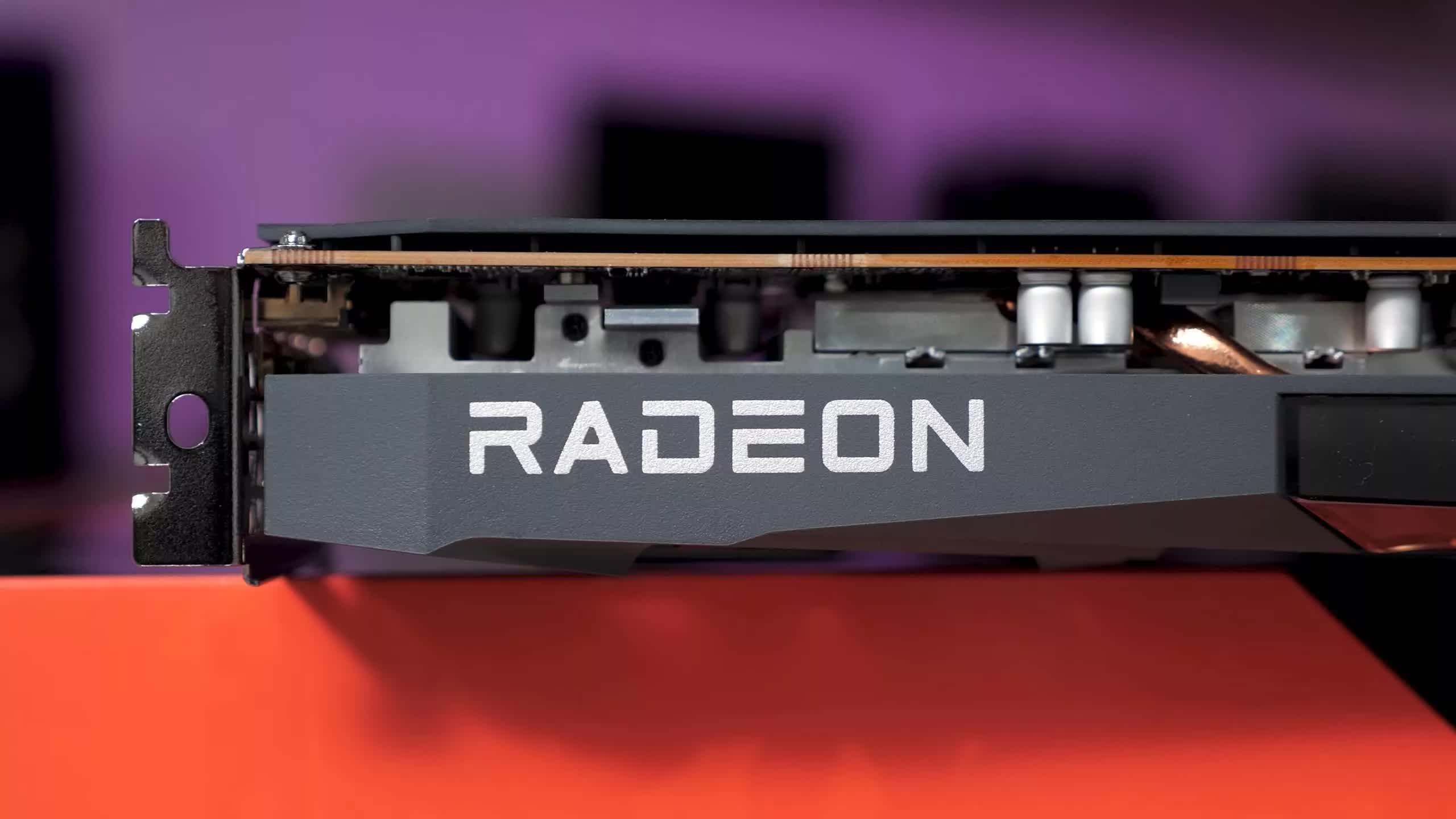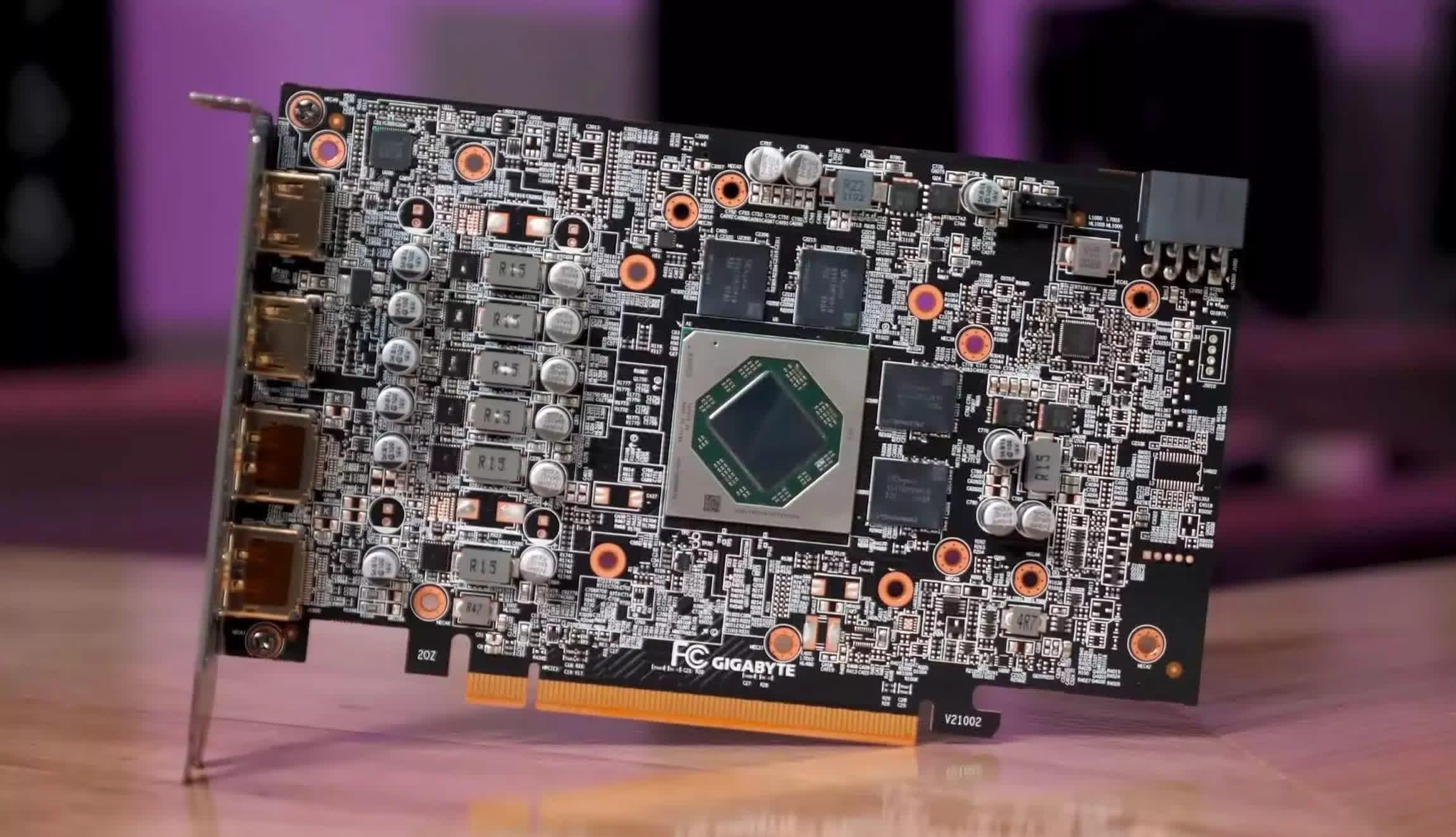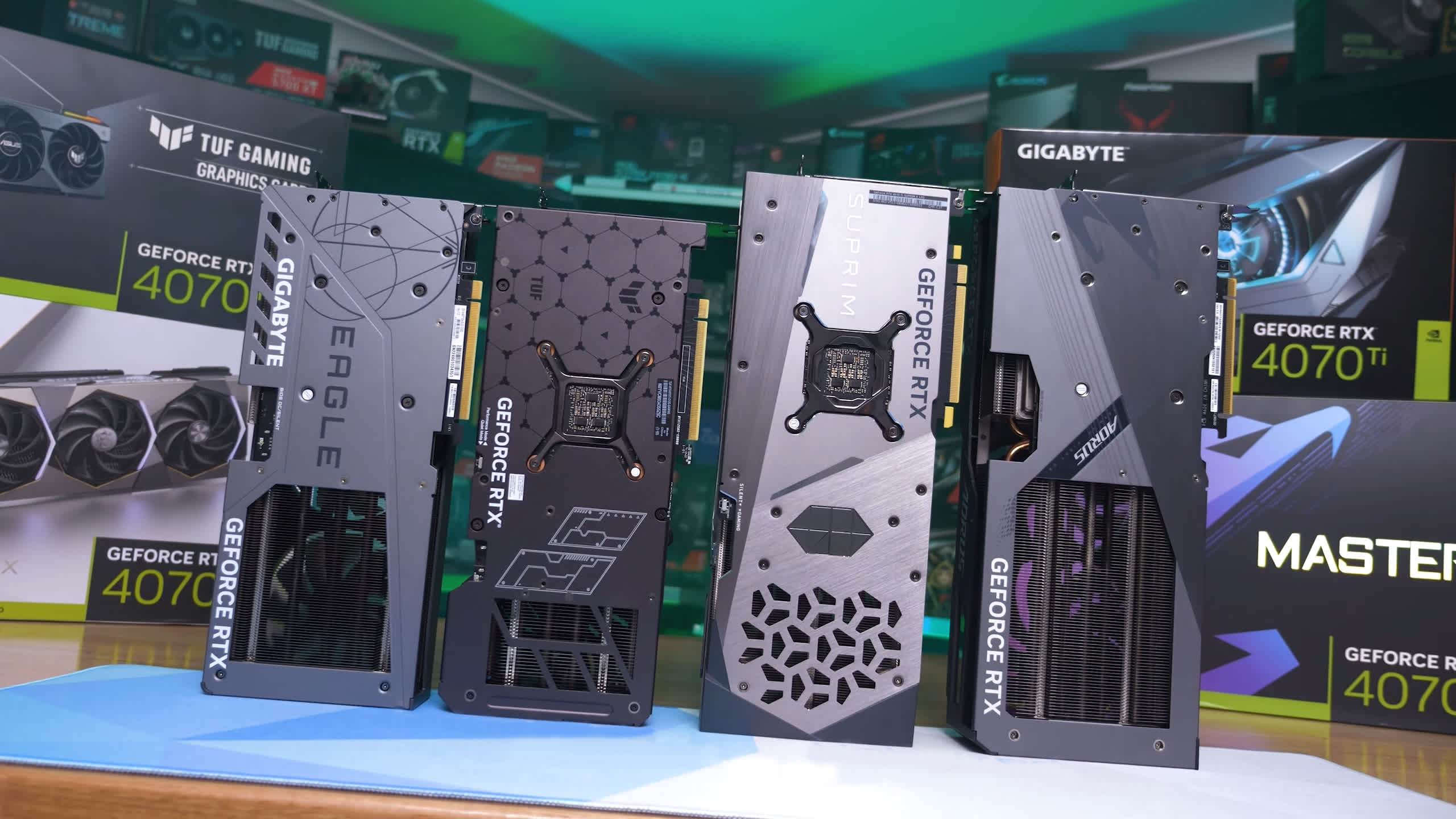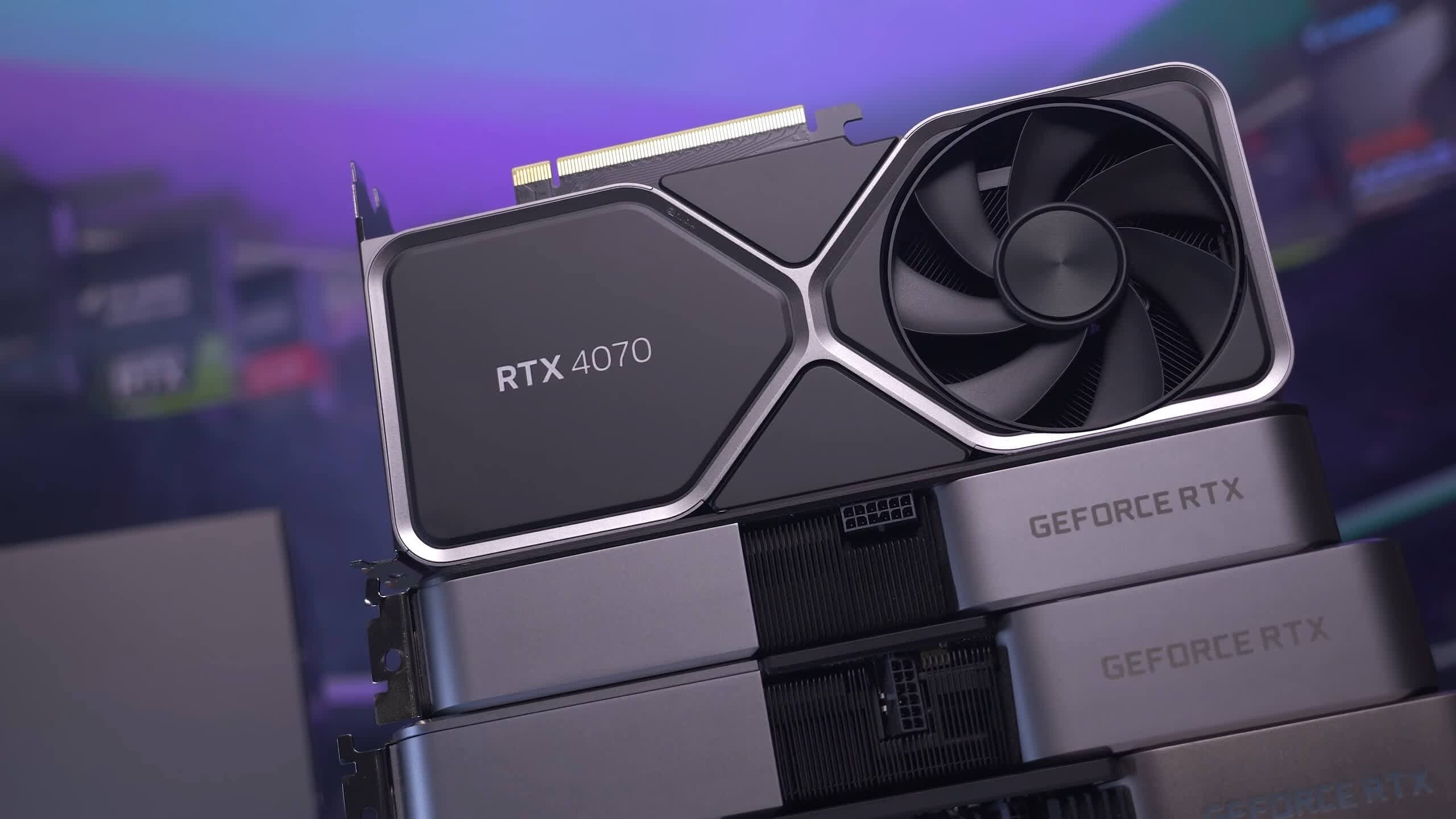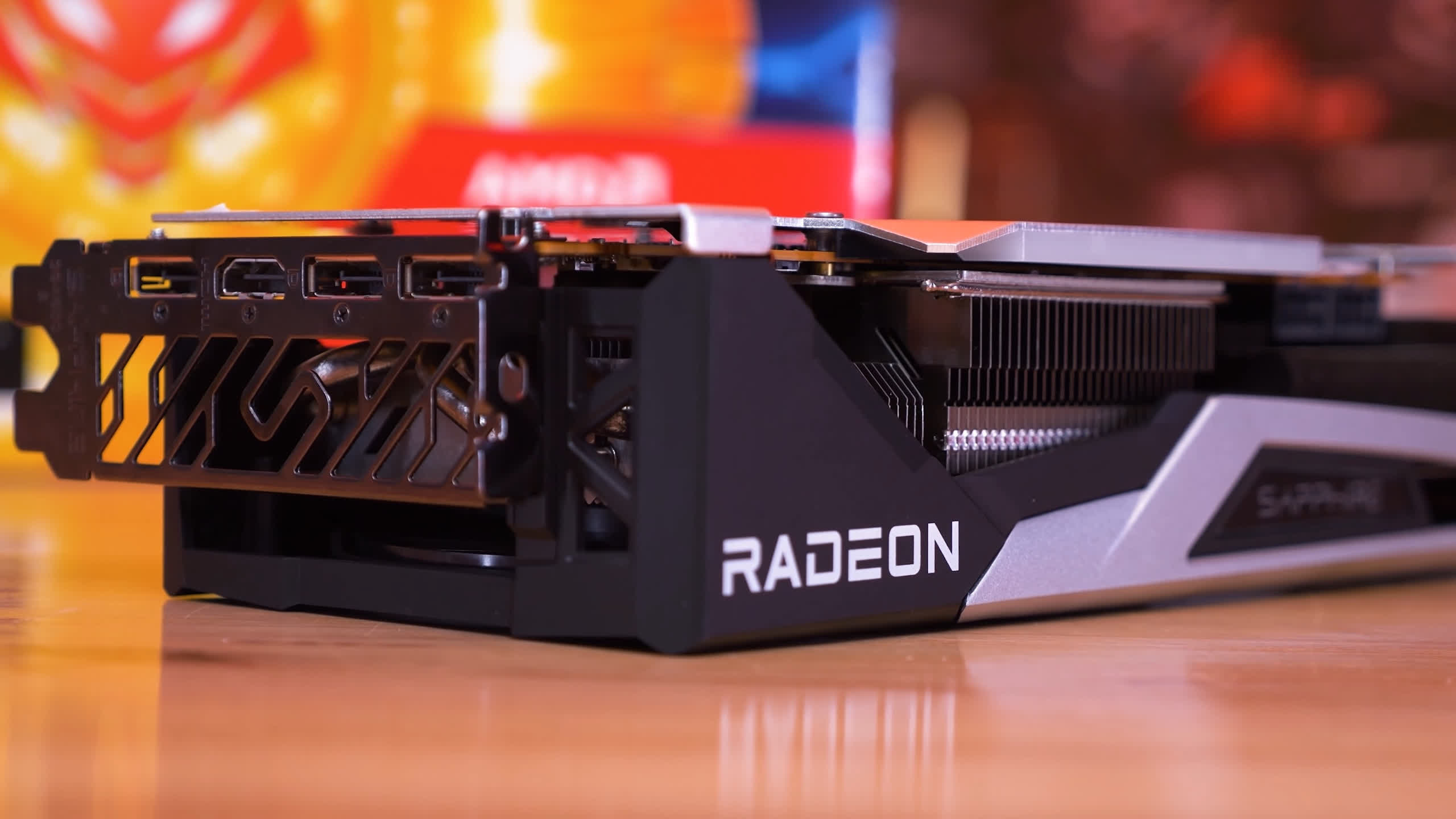Welcome back to our GPU pricing update series. We honestly believed this month would remain relatively uneventful in the GPU market until both Nvidia and AMD decided to get the ball rolling with their new mid-range and mainstream GPUs.
Nvidia just announced the RTX 4060 series a few days ago, and we're anticipating news from AMD about the Radeon RX 7600 any day now. This situation has prompted a considerable amount of activity in the GPU market, making it a topic worth discussing for anyone contemplating purchasing a new GPU in the near future.
Updated: See our latest GPU Pricing Update here.
The primary disruption to the market is the announcement of the RTX 4060 series, which Nvidia officially unveiled earlier this week. We recommend checking out our news recap to glean all the specs and performance estimates.
However, the essential points to note for this article are that three new GPUs will be entering the market shortly. We've got the GeForce RTX 4060 Ti 8GB launching next week at $400, followed by the RTX 4060 Ti 16GB at $500 and the RTX 4060 at $300, both slated for release in July.
These products will exert price pressure on existing items in the market, and this has already begun to transpire even before these cards were officially announced. It seems that Nvidia is at least making some moves to clear out existing stock of mid-range models, and we anticipate this trend to continue and intensify around the release of the new 40 series GPUs.
This scenario precipitates a few intriguing dilemmas. For GPU buyers, it might mean that purchasing an older 30 series GPU is the right move, as pricing currently appears reasonable and could potentially offer a decent deal. However, it also complicates Nvidia's task of convincing buyers to opt for their new 40 series models, at least while stocks of these cards remain.
GeForce RTX 30 series pricing
| MSRP | Lowest Price March | Lowest Price April | Lowest Price May | Current Price Inflation | Increase Apr to May | |
|---|---|---|---|---|---|---|
| GeForce RTX 3090 Ti | $2,000 | No stock | No stock | No stock | n/a | |
| GeForce RTX 3090 | $1,500 | No stock | No stock | No stock | n/a | |
| GeForce RTX 3080 Ti | $1,200 | No stock | No stock | No stock | n/a | |
| GeForce RTX 3080 12GB | n/a | No stock | No stock | No stock | n/a | |
| GeForce RTX 3080 10GB | $700 | No stock | No stock | No stock | n/a | |
| GeForce RTX 3070 Ti | $600 | $600 | $540 | $505 | -16% | -6% |
| GeForce RTX 3070 | $500 | $500 | $500 | $450 | -10% | -10% |
| GeForce RTX 3060 Ti | $400 | $420 | $410 | $390 | -3% | -5% |
| GeForce RTX 3060 | $330 | $340 | $340 | $340 | 3% | 0% |
| GeForce RTX 3050 | $250 | $280 | $280 | $285 | 14% | 2% |
| Average | -2% | -4% |
For instance, if we observe 30 series GPU pricing on Newegg at the moment for the cheapest brand-new in-stock models, we've seen decent price cuts for both the RTX 3070 Ti and RTX 3070 this month. The RTX 3070 Ti has plummeted to a new low of $505, down from $600 just two months ago, while the RTX 3070 has decreased to $450 – the first time ever this card has been available below its MSRP.
While these prices aren't especially impressive, particularly for the 3070 Ti given the limitations of having just 8GB of VRAM, they make the RTX 4060 Ti a less attractive purchase in comparison.
Just days ago, our main discussion around the RTX 4060 Ti 8GB involved comparing it to both the RTX 3060 Ti and RTX 3070. It's still true that the 4060 Ti should offer approximately 15% more performance than the 3060 Ti at the same price; the 3060 Ti is still priced at $390 today, so we've yet to see flash sales pushing that card out the door.
However, the 4060 Ti was also anticipated to deliver roughly RTX 3070 levels of performance at a $100 discount, but this discount has now shrunk to just $50 while stocks last for the 3070.
This situation implies that the RTX 4060 Ti 16GB, priced at $500, will deliver similar performance levels to the 3070 at a $50 premium, with the higher price solely covering the extra VRAM, 16GB versus 8GB. Nvidia would surely want to move the 3070 and 3070 Ti off the shelves before July to avoid this type of comparison, because the hefty $100 premium for 16GB of VRAM will appear far less appealing when the 3070 offers the same performance for less, albeit with VRAM constraints. One can understand why these sorts of sales have begun, and we'd expect even further discounts to commence shortly, particularly for models like the RTX 3060 Ti.
What hasn't been affected yet is the pricing for the RTX 3060 and RTX 3050 due to the introduction of the RTX 4060. With the 4060's debut set for July and the uncertainty surrounding its price and specifications until just a few days ago, there has been no price movement for the lower end of Nvidia's line-up. However, now that we know the 4060 is coming and is priced at $300, it's exceedingly challenging to justify either 30 series model. The RTX 3060, priced at $340, costs $40 more and will likely perform notably slower, although it does offer 4GB more VRAM – yet, that seems like a tough sell to us.
The RTX 3050 appears even less appealing, with that model priced around $280 as far back as September of 2022, with no attempts to reduce this card to its $250 MSRP. At $280, we believe this model should absolutely not be purchased under any circumstances. The RTX 3060 is already around 35% faster than the RTX 3050, and Nvidia claims a further 20% improvement for the 4060 over the 3060, with the same VRAM capacity as the 3050. Combining these gains implies that by July, you'll be able to purchase a GPU for just $20 more than the 3050 that delivers 60% better performance – though it's worth noting that the 3050 was not particularly impressive even before we learned about the 4060, as it's been outperformed in value by AMD's RX 6600 for months now.
With this in mind, in our opinion, the RTX 3050 should be priced at no more than $200 at present, ideally sitting at around $180, and we definitely would not recommend purchasing it above $200. The RTX 3060 should also drop to $250 to be competitive against Nvidia's new models – these are the sorts of prices required if Nvidia wishes to start clearing these from the market, and realistically they'd probably need to be even cheaper if they aim to clear them before the RTX 4060 arrives.
Radeon RX 6000 series pricing
| MSRP | Lowest Price March | Lowest Price April | Lowest Price May | Current Price Inflation | Price Increase Apr to May | |
|---|---|---|---|---|---|---|
| Radeon 6950 XT | $1,100 | $680 | $630 | $630 | -43% | 0% |
| Radeon 6900 XT | $1,000 | No stock | No stock | No stock | n/a | |
| Radeon 6800 XT | $650 | $565 | $540 | $510 | -22% | -6% |
| Radeon 6800 | $580 | $465 | $470 | $485 | -16% | 3% |
| Radeon 6750 XT | $550 | $380 | $380 | $380 | -31% | 0% |
| Radeon 6700 XT | $480 | $360 | $350 | $320 | -33% | -9% |
| Radeon 6650 XT | $400 | $260 | $260 | $260 | -35% | 0% |
| Radeon 6600 XT | $380 | $270 | $255 | $255 | -33% | 0% |
| Radeon 6600 | $330 | $225 | $200 | $200 | -39% | 0% |
| Radeon 6500 XT | $200 | $160 | $160 | $160 | -20% | 0% |
| Radeon 6400 | $160 | $135 | $135 | $135 | -16% | 0% |
| Average | -29% | -1% |
On the AMD side of the market, there's been less price movement and no noticeable efforts to clear out RX 6600 series GPUs prior to the launch of the new Radeon RX 7600. Pricing for the RX 6650 XT through to the RX 6400 has remained fairly consistent over the past few months, which could imply one of two scenarios.
Either this was already AMD's flash sale price and they began clearing out cards months ago but still have a significant supply left; or AMD isn't particularly concerned with discontinuing older models before their new card launches. It's hard to determine their strategy at this stage, but we're sure we'll gain more insight when the RX 7600 is officially unveiled and we have a clearer idea of its pricing and performance.
However, a couple of cards have experienced notable price reductions. The Radeon 6800 XT is now available for just $510, down from $540 last month, and $570 before that. This aggressive price, if supply remains steady through July, will exert substantial pressure on the RTX 4060 Ti 16GB.
With the Radeon 6800 XT also offering 16GB of VRAM and delivering performance about 30% higher than the RTX 3070 – which should be similar to the 4060 Ti based on Nvidia's figures – AMD should be highly competitive here. This also reinforces our belief that the $100 premium for the 16GB 4060 Ti is excessive, and in reality, there should only be one 4060 Ti model, ideally the 16GB model priced at no more than $400.
The Radeon RX 6700 XT also continues to be available at a reduced price, now having dropped to just $320. This model, along with the RX 6700 non-XT at $280, are likely to exert a great deal of pressure on the RTX 4060 and RX 7600 from a competitive standpoint.
We don't know much about the RX 7600 yet, but the RTX 4060 is priced at $300, only $20 cheaper than the current 6700 XT asking price. The 6700 XT is approximately 30% faster than an RTX 3060 in our testing, so that will certainly present an intriguing battle regarding factors such as cost per frame and VRAM limitations, as the 6700 XT is a 12GB card.
As we examine the RTX 30 series and RX 6000 series, it appears that we're heading into a fascinating few months. Both Nvidia and AMD are poised to introduce new mid-range GPUs into a market that seems to still be saturated with old models available for purchase. The RTX 3070, RX 6800 XT, and RX 6700 XT are likely to exert considerable competitive pressure on the new models, and we expect prices for other models (especially the RTX 3050) to start declining soon.
New GPU Pricing: Current Generation
One consistent trend appears to be that most PC gamers currently show little interest in purchasing a new GPU. Demand is low at the moment, supply is strong, and graphics card vendors have struggled to convince buyers that new products are essential.
We're still hearing from retailers that sales volumes for GPUs are relatively poor, even for the most recent launches. This situation explains why cards at the manufacturer's suggested retail price (MSRP) are widely available.
| MSRP | Lowest Price March | Lowest Price April | Lowest Price May | Current Price Inflation | Increase Apr to May | |
|---|---|---|---|---|---|---|
| GeForce RTX 4090 | $1,600 | $1,650 | $1,600 | $1,590 | -1% | -1% |
| GeForce RTX 4080 | $1,200 | $1,200 | $1,150 | $1,120 | -7% | -3% |
| GeForce RTX 4070 Ti | $800 | $815 | $800 | $800 | 0% | 0% |
| GeForce RTX 4070 | $800 | $600 | $590 | -2% | -2% | |
| Radeon RX 7900 XTX | $1,000 | $1,000 | $960 | $955 | -5% | -1% |
| Radeon RX 7900 XT | $900 | $800 | $780 | $760 | -16% | -3% |
| Intel Arc A770 16GB | $350 | $350 | $350 | $400 | 14% | 14% |
| Intel Arc A770 8GB | $320 | $320 | $290 | $330 | -3% | 14% |
| Intel Arc A750 | $290 | $250 | $250 | $230 | -21% | -8% |
| Intel Arc A380 | $140 | $140 | $140 | $140 | 0% | 0% |
| Average | -3% | 1% |
In reality, we shouldn't even call them MSRP cards, as most models are already selling for below their MSRP in the US and other regions. The RTX 4090, for example, is priced slightly under MSRP, while the RTX 4080 is now selling for as low as $1120 (still too high in our opinion). The Radeon 7900 XTX is just $955 and the RX 7900 XT is priced at $760 – a stark admission that the $900 MSRP was significantly overestimated.
It's only the RTX 4070 Ti that's maintained its $800 MSRP; even the RTX 4070 has started to drop slightly below its advertised price. Only Intel Arc GPUs have risen in price, which seems to be more related to supply and the end of flash sales.
The general sentiment among buyers, however, is that these prices are still too high. Very few people are interested in an RTX 4080 at $1100, and the same goes for the RTX 4070 at $600. Most models will need substantial discounts to start selling quickly, which might never happen or might be a very slow process.
Nvidia seems more inclined to reduce production than lower prices substantially, although the RTX 4080 offers some indication they are willing to adjust. Meanwhile, AMD's strategy seems to be to absorb criticism at launch for a high price, only to almost immediately lower that price. A curious approach indeed.
Used GPU pricing
| MSRP | Newegg Lowest Price May | eBay Used Price April | eBay Used Price May | Used Price Hike Apr to May | Discount Used vs New | |
|---|---|---|---|---|---|---|
| GeForce RTX 3090 Ti | $2,000 | No stock | $991 | $872 | -12% | |
| GeForce RTX 3090 | $1,500 | No stock | $748 | $743 | -1% | |
| GeForce RTX 3080 Ti | $1,200 | No stock | $654 | $587 | -10% | |
| GeForce RTX 3080 12GB | n/a | No stock | $591 | $532 | -10% | |
| GeForce RTX 3080 10GB | $700 | No stock | $519 | $452 | -13% | |
| GeForce RTX 3070 Ti | $600 | $505 | $438 | $392 | -11% | -22% |
| GeForce RTX 3070 | $500 | $450 | $360 | $326 | -9% | -28% |
| GeForce RTX 3060 Ti | $400 | $390 | $302 | $288 | -5% | -26% |
| GeForce RTX 3060 | $330 | $340 | $273 | $263 | -4% | -23% |
| GeForce RTX 3050 | $250 | $285 | $190 | $218 | 15% | -24% |
| Average | -6% | -24% |
There's promising news for the used GPU market this month, too, particularly for previous-gen GPUs. After several months of relatively stagnant pricing, May has witnessed more substantial price drops for the RTX 30 series. The overall market has decreased by an average of 6%, with some cards experiencing double-digit percentage drops.
This allows the used market to keep pace with new product pricing; the debut of new models like the RTX 4070 makes it unsustainable to sell a used RTX 3080 for $590, for instance, when the 4070 is faster and costs $600 new. This is why we're seeing quite reasonable price drops for most models in the mid to high range, and I anticipate this will accelerate for the lower segments of the market in the coming months.
| MSRP | Newegg Lowest Price May | eBay Used Price April | eBay Used Price May | Used Price Hike Apr to May | Discount Used vs New | |
|---|---|---|---|---|---|---|
| Radeon 6950 XT | $1,100 | $630 | $611 | $555 | -9% | -12% |
| Radeon 6900 XT | $1,000 | No stock | $554 | $499 | -10% | n/a |
| Radeon 6800 XT | $650 | $510 | $475 | $464 | -2% | -9% |
| Radeon 6800 | $580 | $485 | $400 | $380 | -5% | -22% |
| Radeon 6750 XT | $550 | $380 | n/a | n/a | n/a | n/a |
| Radeon 6700 XT | $480 | $320 | $290 | $273 | -6% | -15% |
| Radeon 6650 XT | $400 | $260 | $231 | $205 | -11% | -21% |
| Radeon 6600 XT | $380 | $255 | $199 | $187 | -6% | -27% |
| Radeon 6600 | $330 | $200 | $163 | $155 | -5% | -22% |
| Radeon 6500 XT | $200 | $160 | $114 | $98 | -14% | -39% |
| Radeon 6400 | $160 | $135 | $100 | n/a | n/a | n/a |
| Average | -8% | -21% |
Similar story with AMD, with used Radeon 6000 series pricing dropping by an average of 8 percent. Last month we only saw a 3 percent price reduction, so used sellers are finding it increasingly challenging to sell cards at high prices. This is logical since some models were not previously available used for much less than their brand-new counterparts. As a result, the discount for buying used versus new has increased, from a 17 percent discount last month to 21 percent this month, which is a more reasonable figure.
| MSRP | eBay Average Price March | eBay Average Price April | eBay Average Price May | Current Price Inflation | Price Increase Apr to May | |
|---|---|---|---|---|---|---|
| GeForce RTX 2080 Ti | $1,000 | $385 | $378 | $383 | -62% | 1% |
| GeForce RTX 2080 Super | $700 | $288 | $284 | $254 | -64% | -11% |
| GeForce RTX 2080 | $700 | $241 | $236 | $239 | -66% | 1% |
| GeForce RTX 2070 Super | $500 | $248 | $236 | $209 | -58% | -12% |
| GeForce RTX 2070 | $500 | $216 | $203 | $182 | -64% | -10% |
| GeForce RTX 2060 Super | $400 | $207 | $213 | $195 | -51% | -9% |
| GeForce RTX 2060 | $350 | $175 | $168 | $153 | -56% | -9% |
| Average | -60% | -7% |
Older series like the RTX 20 series have also been impacted, although the effect varies by model. The RTX 2080 Ti has held its value quite well over the past three months, potentially due to its 11GB of VRAM, which is still very usable for modern ultra settings gaming. This card averages $383 used, while the comparable RTX 3070 with just 8GB of VRAM has steadily dropped from $379 to $360 to $326 over the past three months. However, other cards like the RTX 2070 Super have seen a 12% price reduction on the used market, so it's only select models that are maintaining their value.
| MSRP | eBay Average Price March | eBay Average Price April | eBay Average Price May | Current Price Inflation | Price Increase Apr to May | |
|---|---|---|---|---|---|---|
| GeForce GTX 1660 Ti | $280 | $137 | $138 | $138 | -51% | 1% |
| GeForce GTX 1660 Super | $230 | $130 | $125 | $125 | -45% | -4% |
| GeForce GTX 1660 | $220 | $106 | $113 | $113 | -49% | 7% |
| GeForce GTX 1650 Super | $160 | $115 | $102 | $102 | -36% | -11% |
| GeForce GTX 1650 | $150 | $95 | $99 | $99 | -34% | 4% |
| Average | -43% | -1% |
The GTX 1660 series is another group of GPUs that saw large reductions in pricing on the used market this month. For some reason, the GTX 1650 series didn't see as drastic cuts, which has led to anomalies like the GTX 1660 generally being more affordable than the GTX 1650 Super, despite being faster. The real killer here is the GTX 1660 Super, which is just $5 more on average than the 1650 Super, but delivers 20% more performance.
| MSRP | eBay Average Price March | eBay Average Price April | eBay Average Price May | Current Price Inflation | Price Increase Apr to May | |
|---|---|---|---|---|---|---|
| Radeon 5700 XT | $400 | $173 | $157 | $158 | -60% | 1% |
| Radeon 5700 | $350 | $149 | $139 | $133 | -62% | -5% |
| Radeon 5600 XT | $280 | $122 | $125 | $127 | -55% | 2% |
| Radeon 5500 XT 8GB | $200 | $85 | $106 | $104 | -48% | -2% |
| Average | -56% | -1% |
The only GPU series we currently track that didn't see a ton of price movement this month was the Radeon RX 5000 series. Pricing is still low there given the performance, and price reductions in previous months were steep, so we guess that makes sense.
GPU Market Trends: Wrapping Up
Overall, it's been a reasonably interesting month for the GPU market. As we mentioned at the outset, this came as a bit of a surprise to us, but it makes sense as we're drawing nearer to both GPU vendors offering a full lineup of next-generation products.
While these new graphics cards haven't been particularly impressive, they're slightly better to the point where justifying previous-gen models on both the new and used market at existing prices is becoming difficult. This has led to price cuts, flash sales, and a general downward shift for buyers considering used graphics cards.
This is all positive news for buyers. No one wants a market where new products are introduced, and pricing remains stagnant. The process has been much slower this time around, but we are finally seeing discounts for Nvidia GPUs below MSRP, as well as plenty of competition from AMD, who seem to continually adjust prices over time. New releases are having some impact here, and we suspect AMD and Nvidia are eager to discontinue older cards so they don't interfere with the launches of new mainstream models.
Our expectation going forward involves more aggressive price cuts and flash sales for lower-end models, particularly the RTX 3060 and RTX 3050, which haven't significantly moved in price and will quickly become unappealing as soon as the RTX 4060 becomes available. We're hopeful for some sweet discounts, although if there's still a large inventory to move, Nvidia may be unwilling to execute drastic price cuts across a lot of stock. However, some action will likely be necessary given new releases.
We're also eager to see what AMD does with the Radeon RX 7600, which we anticipate will launch shortly. We're uncertain about how this will impact the market as we're still awaiting details on pricing and performance, but we hope AMD doesn't make a misguided decision where the 7600 fails to offer an increase in price-to-performance ratio.
